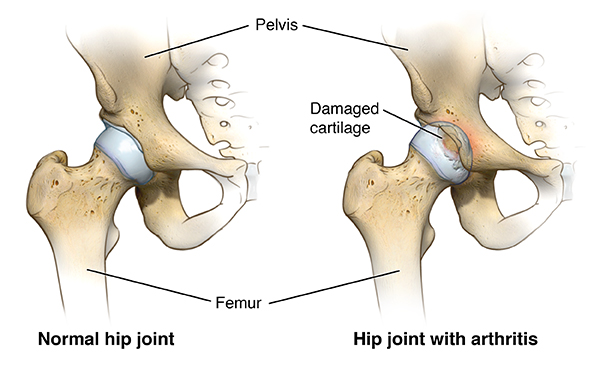Finding Relief from Hip Osteoarthritis Without Surgery

Hip osteoarthritis is one of the most common causes of chronic hip pain, especially among adults over 50. As cartilage in the hip joint gradually wears down, patients often experience stiffness, limited motion, and sharp pain during walking, standing, or climbing stairs. While surgery and joint replacement are often presented as the only solutions, many people are now exploring non-surgical approaches that can help relieve symptoms and improve quality of life.
At LifeStem Regenerative Medicine in Houston, we focus on helping patients manage hip osteoarthritis through natural, restorative methods designed to support the body’s own healing potential.
Understanding Hip Osteoarthritis
Osteoarthritis is a degenerative joint condition that develops when the smooth cartilage cushioning the bones wears away over time in a complex process that is not yet fully-understood. This leads to friction between the femur and pelvis, causing pain, inflammation, and loss of mobility.
Common symptoms include:
- Pain or stiffness in the hip joint, especially after sitting or resting
- A clicking or grinding sensation during movement
- Decreased range of motion
- Difficulty standing up or walking long distances
Factors such as aging, previous injuries, repetitive motion, or excess body weight can increase the likelihood of developing hip osteoarthritis.
The Limitations of Traditional Treatments
Conventional approaches often include pain relievers, corticosteroid injections, or physical therapy. While these can temporarily reduce discomfort, they typically do not address the underlying degeneration of joint tissue. Over time, symptoms may progress to the point where joint replacement surgery is recommended.
However, surgery can be invasive and require significant recovery time. Many patients prefer to explore less invasive options first — especially if they are not yet ready for surgery or wish to delay it.
Non-Surgical Relief Through Regenerative Techniques
LifeStem offers advanced non-surgical treatments that work to restore balance and function within the hip joint. These methods aim to calm inflammation, promote tissue repair, and improve mobility — all while avoiding the risks associated with surgery.
Two key approaches include:
- Platelet-Rich Plasma (PRP) Therapy:
PRP uses a patient’s own blood to isolate growth factors that support natural healing. When carefully injected into the hip joint, these growth factors help stimulate the repair of cartilage and surrounding tissues. PRP is widely studied for its role in reducing inflammation and improving joint function in osteoarthritis patients. - Cellular Therapy:
Cellular therapy uses specialized cells collected from a patient’s own tissue — such as bone marrow or adipose (fat) — to support repair and regeneration in areas affected by degeneration. These cells contain powerful proteins that help calm inflammation and may aid the body’s ability to rebuild or stabilize damaged tissue.
Both treatments are performed in-office using image-guided precision for accurate placement and optimized outcomes.
The Role of Movement and Rehabilitation
A successful recovery plan for hip osteoarthritis often includes gentle exercise and physical therapy. Strengthening surrounding muscles helps stabilize the hip joint, while stretching maintains flexibility. Our team works with patients to design individualized plans that support long-term mobility and comfort.
Lifestyle adjustments such as weight management, anti-inflammatory nutrition, and low-impact activities like swimming or cycling can also help preserve joint health.
Why Patients Choose LifeStem
Patients in Houston trust LifeStem for our focus on safe, non-surgical solutions that are customized to each individual. By combining regenerative therapies with evidence-based care and personalized guidance, we help people stay active longer — without unnecessary surgical procedures.
If you’re struggling with hip pain or stiffness from osteoarthritis, you don’t have to settle for surgery as your only option. Non-surgical treatments may offer a path toward improved comfort, strength, and mobility.
